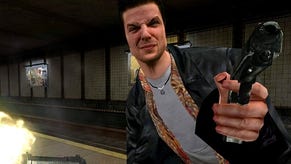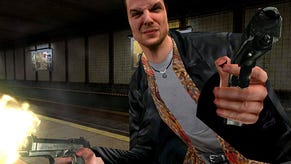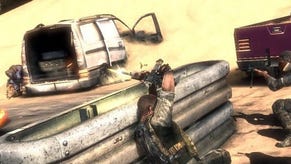Max Payne
Review - Max Payne and Xbox - a match made in heaven, or a hellish combination?
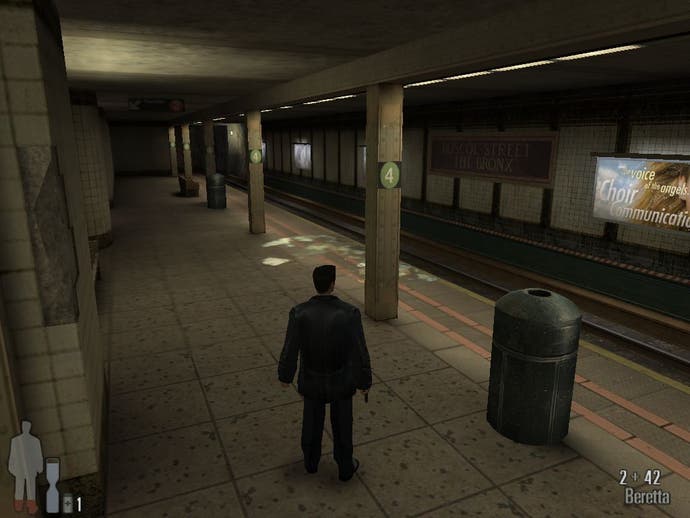
I Made Like Chow Yun Fat
When I reviewed the original PC version of Max Payne last summer, I ended by saying that "maybe, just maybe" it was worth going through the pain a second time. Well, eight months later I've finally got around to playing through the game again, but this time round it was on an Xbox. Max Payne could almost have been made with the Xbox in mind. A triumph of style over substance with gorgeous graphics shown off to maximum effect thanks to the introduction of Matrix-style bullet time™ sequences, it was a fun but ultimately shallow and at times frustrating action game. The bad news is that the recently released Xbox version of the game is a half-hearted affair, a virtually straight port which fails to correct any of Max's shortcomings while adding a couple of new problems all of its own. As before you step into the boots of one of New York's finest, a bizarrely named undercover agent for the DEA caught in a web of double crosses, drug dealing mobsters and sinister corporations. Within the first hour the game has run through almost every cliché of Hong Kong cinema and classic Film Noir; Max is now on his own, seeking revenge for the death of his wife and child, with both the police and the mafia on his tail.
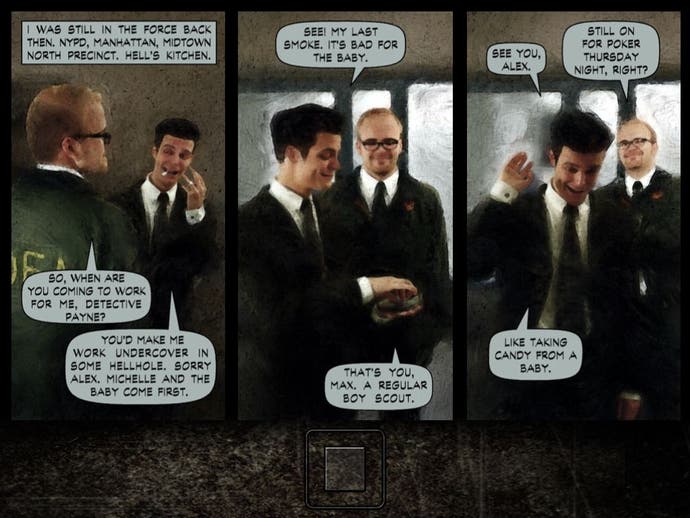
Armed And Extremely Dangerous
Throughout the game your story is told by short comic book style cutscenes which you will either love or hate, with cringe-inducing Raymond Chandler inspired dialogue, flat monotone voice acting, and artwork derived from photographs of the developers and their friends goofing around pulling funny faces and pointing guns at each other. Between these plot dumps the focus is very much on run and gun action, and this is where the game works best. Max has an array of semi-realistic weapons at his disposal, from Beretta and Desert Eagle pistols through pump action shotguns to assault rifles and grenade launchers, and the results are inevitably spectacular as you unleash a hail of lead on your enemies. Mafia hitmen, special forces types, corporate security guards and sinister suits all stand in your way, and their AI is generally fairly good, apart from having a habit of occasionally blowing themselves up with grenades, shooting at you through pipes, or merrily wandering single file through a doorway and into your swinging baseball bat. What sets Max apart from the swarm of bland shooters out there though is the inclusion of a bullet time meter, which gradually builds up as you kill more and more bad guys. Once activated it slows down time, allowing you to make like Chow Yun Fat or Keanu Reeves, dodging bullets as they make their lazy way through the air, and allowing you more time to aim your own shots, making every round count. By pressing the appropriate button and moving at the same time you can also pull off John Woo style leaps, flying through the air backwards, forwards or sideways in slow motion, guns blazing as the expended rounds clink off the floor one after another. During these slo-mo sessions even the audio changes, a nice touch which gives the battle a surreal muffled sound.

Max, You're In A Computer Game
Unfortunately Remedy's other attempts at being different are rather hit and miss. Take the nightmare sequences, for example, where you find yourself running around inside Max Payne's subconscious. These make an interesting change of pace and are certainly a very arty way of portraying Max's guilt over his wife's death, but part of the recurring dream is following a maze of blood trails above a bottomless pit, with the crying of a baby looping over and over again in the background as you try to avoid stumbling from the narrow tightrope of gore into the nothingness below. Needless to say this soon gets bloody irritating. Another scene sees you trapped in a restaurant rigged with incendiary devices, but for the most part the game gives you no visual cues to show you where the gasoline trails are on the ground or where the flames will appear next. Because of this the whole level becomes quick load city as you desperately try to make it across a room without being burnt to a crisp, then quick save, run down a corridor, get blown up for no discernable good reason, reload, continue and repeat. It's less about skill and reactions than trial and error, and again it can become frustrating. Death frequently comes with little warning in Max Payne, which can leave you feeling cheated at times. You can be blown up by a grenade thrown by a hidden enemy, with only the slightest tinkling as it hits the ground a second before it detonates to warn you that you're about to be sent flying across the room in a shower of debris. Getting out of the blast radius in time is often impossible, especially if you can't even see where the grenade has landed. Laser tripwires are another menace, as they can be virtually invisible from certain angles. Even cutscenes can prove fatal, with enemies jumping you from behind as a cinematic comes to an end, leaving you flailing to turn round before Max is peppered with bullets. Meanwhile black clad enemies can lurk in black corners of black lit levels, blasting you with black shotguns. Some sections are so dark that I had to reach for the remote to turn up the brightness on my TV set to compensate.
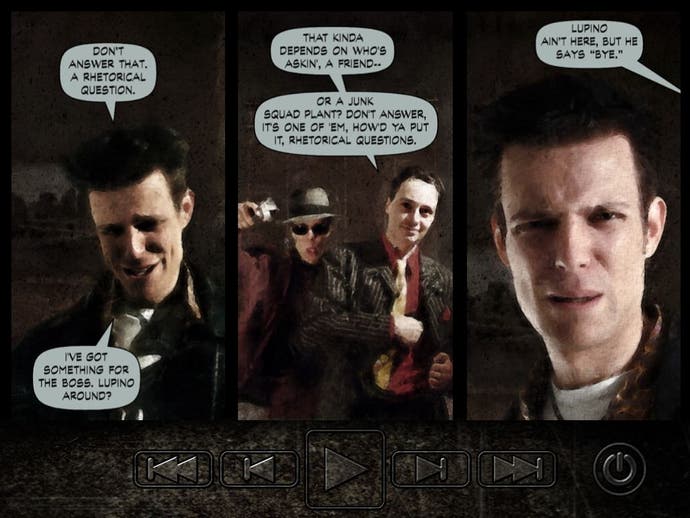
My Options Decreased To A Singular Course
Which brings us nicely to the problems which are unique to the Xbox version of Max Payne. These can be summed up by one word - memory. Or rather lack thereof. The developers were apparently unable or simply unwilling to cram the requisite data into the Xbox's 64Mb of unified memory, as a result of which most levels are cut up into two or three smaller console-friendly chunks. Max was already a very linear experience on the PC, but on the Xbox (and the PS2 for that matter) you are practically on rails. You can walk through a door and be whisked away to a new section of the map without any warning whatsoever, and when the loading screen vanishes you will find that the door has conveniently locked itself behind you. Not only does this prevent you from backtracking to recover additional supplies, it also overwrites your one and only quick save position, which can leave you floundering with low health or ammunition. On the harder difficulty levels this could easily prove fatal. In fact very little effort seems to have gone into porting Max Payne to the Xbox, with the sliced up levels the only obvious change. The graphics which wowed us a year ago aren't quite so remarkable alongside the likes of Halo, the drab box-like cars and endless rooms full of crates a bit bland by comparison. Despite this a few of the levels still suffer from slack framerates, which is pretty disappointing given that the Xbox's hardware is much more capable than the PCs we were playing Max on last summer. Perhaps most embarrassing of all, there are even second-long pauses during the comic book cutscenes as the Xbox loads data off the DVD, interrupting the background music and temporarily blanking the screen. I guess the developers never thought of caching this data before it was needed?
Finito
Sadly the translation from PC to console hasn't been entirely smooth for Max Payne, and although the fully customisable controls are surprisingly easy to use on the standard Xbox gamepad, the rest of the conversion has been rather sloppy. Max lacks the necessary polish to stand out on the Xbox, and the passing of time hasn't been kind to his bullet-riddled good looks. If your PC can't take the heat then this is the next best way to experience the Payne, but it doesn't fare so well on its own merits.
Note : the screenshots in this review are actually taken from the PC version of the game, but you'll be hard pressed to spot any difference. Related Features -
Max Payne review (PC)



